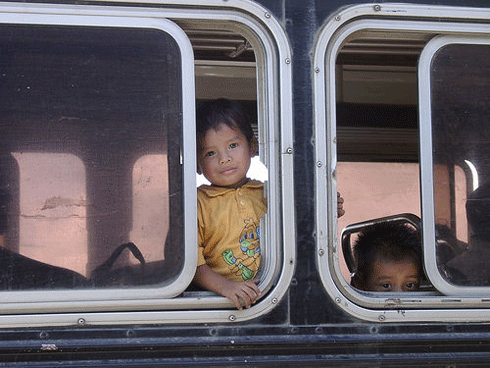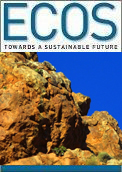
|
Published: 13 February 2012
Carbon, wealth and a long life: tying it all together
A new study shows that countries with high incomes and high carbon emissions do not necessarily achieve higher life expectancies than those with moderate incomes and lower carbon emissions. The finding challenges the assumption that human wellbeing requires growth in both economic activity and carbon emissions.

|
|
Boys on a bus in the village of Bribri, Limon, Costa Rica. The highest international life expectancies are attainable at a wide range of carbon emissions, from 0.5 tonnes per capita (for Costa Rica) to 6.2 tonnes per capita (for the United States): more than a factor of 10 apart. Credit:
m. for matthijs
|
The research, led by the University of Leeds and published in Nature Climate Change highlights alternative development pathways that prioritise human well-being and climate protection over economic growth.
The researchers investigated links between economic wealth, life expectancy and carbon dioxide emissions from fossil-fuels.
Historically, high incomes and high life expectancies have been associated with increasing emission levels. This apparent conflict between socio-economic development and reducing carbon emissions is at the core of international disagreements over addressing climate change.
The new evidence shows that while moderate incomes do not guarantee either high life expectancy or low carbon emissions, the highest international life expectancies are attainable at a wide range of carbon emissions, from 0.5 tonnes per capita (for Costa Rica) to 6.2 tonnes per capita (for the United States): more than a factor of 10 apart.
‘Some nations are clearly more carbon efficient than others when it comes to enhancing well-being,’ says Dr Julia Steinberger, a lecturer in ecological economics at the Sustainability Research Institute of the University of Leeds.
The study takes into account the fact that national carbon emissions are affected by international trade. Conventional territorial, or ‘production-based’, emissions accounting was ‘corrected’ by adding imported, and subtracting exported, carbon embedded in imported goods and services.
The analysis shows that such trade-adjusted ‘consumption-based’ emission accounting is more reflective of national socio-economic benefits than territorial emissions.
‘The displacement of carbon emission through trade has a fairness dimension, since most developed countries are net-importers of carbon from emerging or developing economies,’ commented Dr Giovanni Baiocchi from the Norwich Business School, University of East Anglia.
The researchers also conclude that the diversity of development trajectories among the countries studied indicates individual nations may be able to alter their future course.
‘Most scenarios leading to stable and reduced carbon emissions rely on rapid technology shifts, from fossil-based energy to renewable sources, for example,’ says Dr Steinberger. But the study shows that technology shifts may not be required if economic activity is reduced in the richest countries, and longevity would not be compromised.
‘Since countries currently exist with the same life expectancies as the UK and the US, but with a small fraction of their carbon emissions (and incomes), prioritising economic growth at the expense of climate stability seems less and less defensible,’ she concludes.
Source: Leeds University



